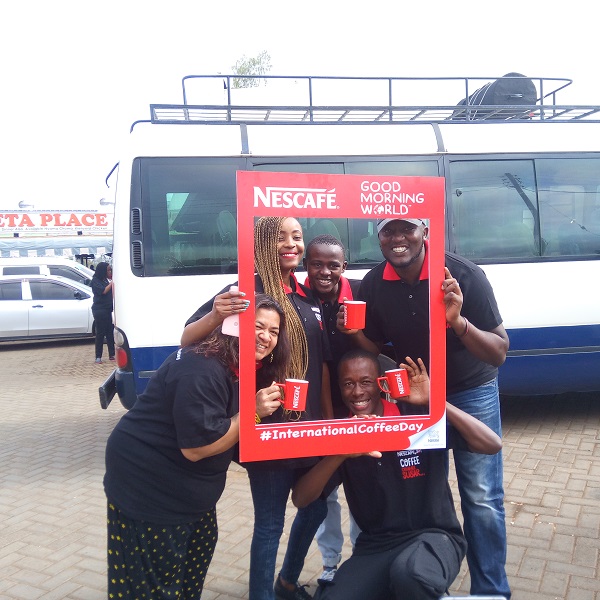The International Coffee Day is a global celebration of coffee’s journey from the farm to your local shop. It is also an opportunity to honor the men and women who grow and harvest the coffee. As part of the celebrations, Nestlé took a group of us on a road trip to Nyeri to help us better understand the process which coffee goes through before It hits your cup. During the road trip we were able to see the Nestlé’s supply chain from the farmer who grows the coffee to the Central Kenya Mills where the coffee is processed. This supply chain is what forms the Nescafé Plan under which Nestlé has engaged farmers in a bid to improve the quality and yield of coffee.
The Nescafé Plan was introduced in Kenya back in 2011 in partnership with Coffee Management Services (CMS). Nestlé which has been buying coffee from Kenya for the past 30 years decided to start the project when they realized that coffee yields in the country had declined to worrying levels. This was because coffee had ceased being a source of income to many farmers due to the rampant corruption in the sector. This corruption saw coffee farmers make peanuts while the middlemen made millions, some opted to cut it down while others like my grandparents just left it unattended.
The Nestlé Nescafé Plan now has 42,000 farmers under its belt spread across 6 counties. These counties are Kiambu, Muranga, Kirinyaga, Embu, Nyeri and Meru. Under the plan, Nestlé has hired agronomists who train the farmers on good agricultural practices which have seen farmers increase their yields from a paltry 2.5 kg per tree to 13 – 18 kg’s currently. This training has also seen farmers use less inputs while farming hence reducing the cost of production. They also introduced Batian which is a better seed variety than what the farmers were using as it is high yielding and also disease resistant. So far they have distributed over 340,000 of these coffee seedlings. The programme has also incorporated a women and youth in coffee component that is meant to empower women and youth to start farming coffee. This initiative has been successful with 25% of new farmers being the youth and over 6,000 of the 42,000 farmers being women.
The biggest benefit that I can say that the farmers got from the Nescafé Plan was the availability of a good market for their produce. This is because farmers under the plan are given fair value for their produce. Farmers not under the plan have to make do with the low prices set by the middlemen. In May this year, farmers under the plan were paid a total of Ksh. 630 Million for the 7.3 million kilograms of coffee that was delivered by the farmers. During this time farmers received on average 87 bob per kg with the highest being paid 103 bob.
During the trip, we got to meet one coffee farmers Mr. James Maina. According to James, before he joined the Nescafé Plan he was not making any money from his farm. This was due to low production and also low prices for his produce. However, after he joined the plan, production shot from a paltry 2.5 kg per tree to 18 kg per tree, overall his production per season moved from 200kg to 1,300 kg’s. He also started getting good prices for his coffee. This saw him quit his career as an electrician to work on his farm full time. Through his farm, he has been able to comfortably educate his three children one of whom is in university. He also proudly showed us his stone house, cows and a motor bike that he bought from the coffee proceeds. According to James, his life has not been the same again since he joined the Nestlé Nescafé Plan.
After leaving the farm we headed to the Central Kenya Mills where the majority of the coffee under the Nescafé Plan is milled. At the mill we were shown the various steps that the coffee berries are taken through from the cleaning, hulling, sorting of the various coffee grades and finally packing. All in all, after the trip i got a better understanding of the process through which coffee goes through before it hits my cup.
Here a some pictures from the road trip;
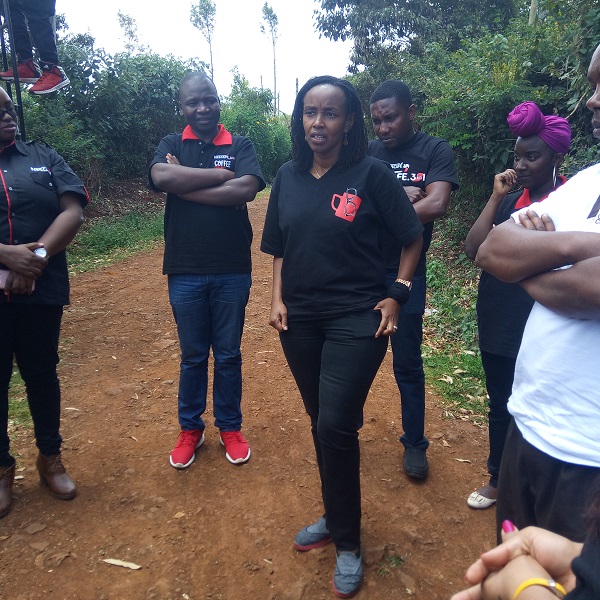
Judy Mwangi from Nestle shares about the Nescafe Plan
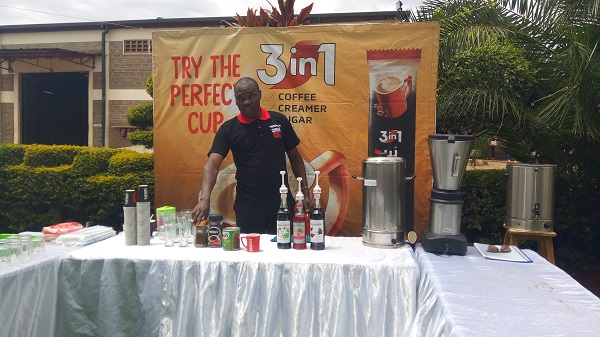
Wycliff a barista demos how to make a Nescafe Choco Moca
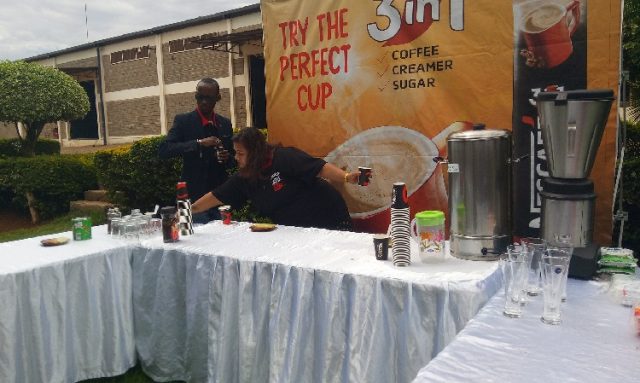
Contestants trying to recreate the barista’s Nescafe choca moca
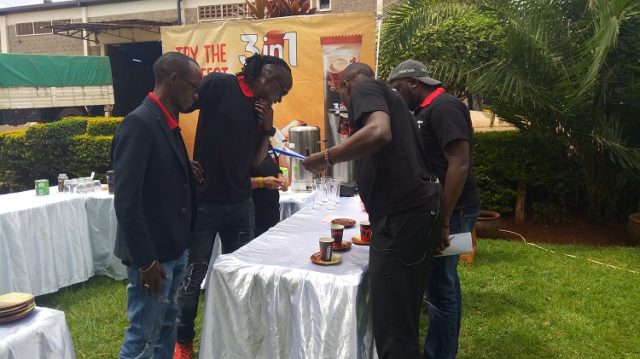
The judging process to determine who made the best choca moca
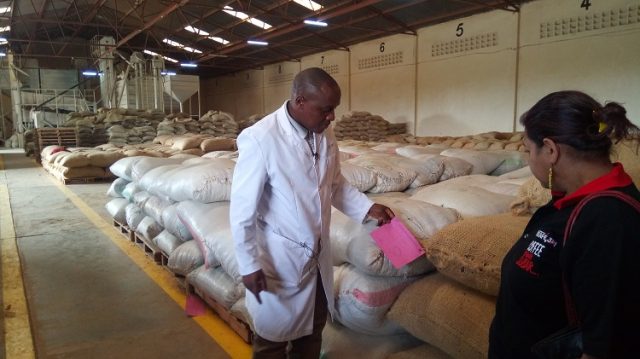
Bags of coffee beans at the Central Kenya Mill
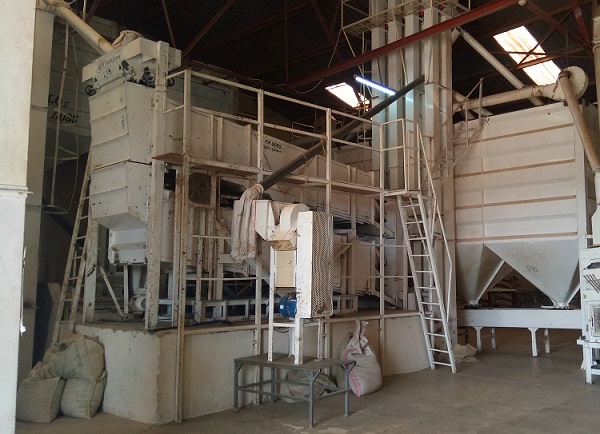
The huge mill at the Central Kenya Mill
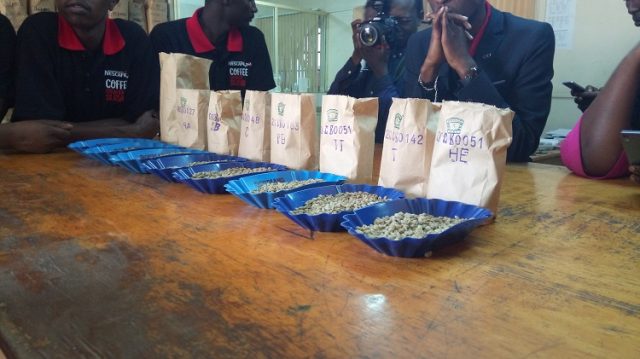
The different varieties of coffee beans


